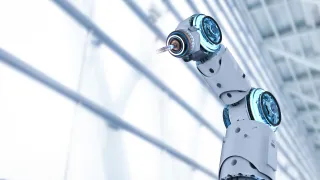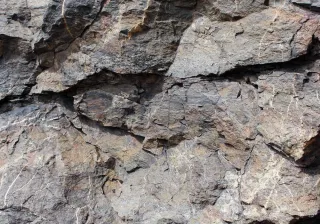In the old days, miners would take a canary down to work with them in the mine shaft. If the canary died, the miners knew that they’d soon be next if they didn’t make a run for it. Canaries were a good indicator of pending disaster.
But canaries can’t do algorithms
In the mine shafts of the future, it will be robots not canaries that act as sentinels for safety. They’ll also be programmed to support or carry out other aspects of mining operations, while human operators stay safely positioned in remote stations above ground. But in the absence of any warm blooded beings below, how will remote operators be able to get a hands-on feeling of what’s going on? In order for mining operations to remain robust, efficient and safe, these remote operators can’t just be observers. They must partake in the operations, and with different senses in play.
A sense of sight can be achieved with various types of remote camera visualizations, although it’s still not easy for operators in the absence of 3D or stereoscopic view. But what about the other senses? Robots need to give feedback to the extent that remote operators feel just like being there on the spot with the remote machine.
Putting all the senses in play
An operator using a subterranean robot to drill holes in rock face may be able to experience a sense of touch, for example, through haptic feedback on the remote controllers. That means being able to feel how solid the rock is and adjust speed or strength accordingly. If the rock were to get too hard for the drilling equipment, it could create all kinds of unwanted safety repercussions and the need for expensive repairs.
A sense of hearing as well as a sense of smell would also be useful, for example, to analyze machine motor sounds and underground explosions or events where gas leaks or burning are indicators of pending disaster. In the former case, auditory feedback is rather easy to implement with microphones, speakers and deliberate sound design. But in the latter case, instead of direct olfactory, or sense of smell, feedback, applicable sensors need to be able to detect suspicious alterations in air quality and alarm operators in other ways.
We recently visited a mining and technology conference in Toronto where many of the presenters and participants were using buzzwords like IoT, Industry 4.0, augmented and virtual reality (AR/VR), user experience and autonomous systems. However, during the breaks, most conceded that the mining industry still has some way to go before these tech trends could be applied to deliver value.
How can VTT help?
In a rather different kind of environment to mines, VTT, together with Tampere University, has developed a Remote Operation and Virtual Reality Center (ROViR) in Tampere, Finland to support remote operation and maintenance simulations for one of the world’s most challenging energy projects, based in the South of France, called ITER – in Latin, meaning ‘the way’.
As with mineshafts, no warm-blooded beings will be able to enter the ITER facility once it’s up and running. That means all maintenance will have to be carried out by smart robots, equipped with sensors for dealing with every possible scenario.
Finding the way with ITER
So far at ROViR, VTT has achieved high success in simulating ITER remote maintenance operations, many of which can be applied to other sectors. For example, VTT has honed the use of a transport robot to move a ten-tonne reactor cassette along a desired route with an accuracy of plus or minus 1 mm.
As well as supporting ITER, one of the aims of our design work with ROViR has been to find new ways for remote operators to achieve a sense of control. And many of these solutions can be directly applied to mining. For example, using VR/AR to help operators better understand spatial dimensions, such as distances among elements; applying ecological interface design for safety-critical control room monitoring user interfaces; or using AR video feeds to highlight crucial objects in remote work areas.
Our InnoLeap concept design approach has been developed to push radical new concepts into the industrial workplace. Backed by the experience gained from this concept design work with ROViR center, we’re now well positioned to provide numerous applications for other industries, especially the mining sector. That means collaborating with mining companies to go deep into the remote operators’ user experience. Using our task-analysis methods, we can explore what remote mining operators will need to do and know in order to be successful in their work tasks, both in abnormal and normal situations.
Canary or no canary, remote operators in the mines of the future won’t succeed by just winging it.





